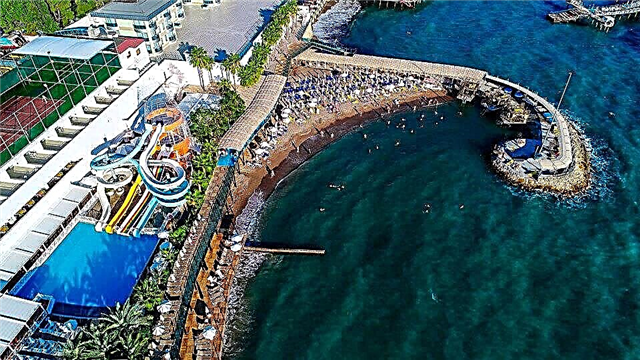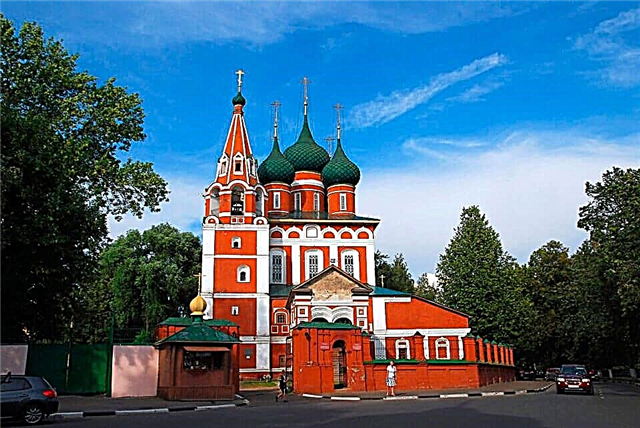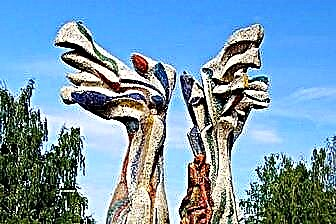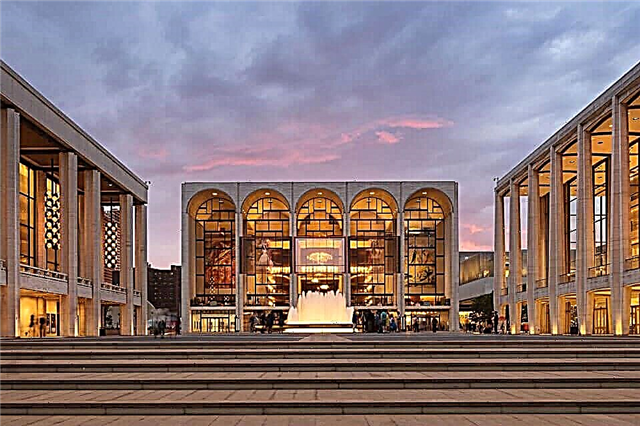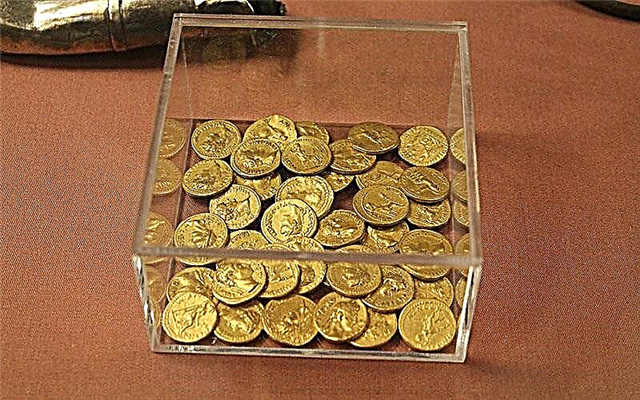The British Museum in London is one of the oldest and largest historical museums in the world, an actively visited tourist site, which contains unique artifacts, artistic masterpieces from around the world. We will tell you about the history of the museum, its secrets, exposition, library and how you can get there on your own.
History

The museum's expositions are based on private collections of three well-known personalities in society, who donated their collections to the newly formed State Historical and Archaeological Museum. The act of its creation was approved by the British Parliament in 1753. The First Baronet, President of the Royal Scientific Society, Hans Sloan, being a keen collector, collected many different natural wonders, which later became priceless rarities of the British Museum.
Antiquary and bibliomaniac Robert Cotton, who collected a large number of manuscripts and books, made a significant contribution to the creation of museum funds: the collection of his manuscripts became the basis of a whole department, which later became the British Library.

Earl of Oxford, politician, public figure Robert Harley, who was friends with Swift and Pope, took an interest in ancient books and manuscripts. All his life he was a passionate collector of book rarities, donated to the museum and significantly replenished its funds. The names of these public figures are sacredly revered by the British; their biographies are studied in schools and universities, special sections of museum expositions are devoted to them.
At first, the museum was located in the Montague mansion in the Bloomsbury area, but it quickly began to replenish with new exhibits, which were already cramped within the framework of one building. During the Victorian years, a colossal classical building was built, which now houses a museum.
Museum secrets

No other museum in the world has so many mysterious exhibits, over the origin and history of which scientists-archaeologists and ethnologists “puzzle over”, as there are in the British one. Among them there are many priceless artifacts that have played an invaluable aid in the study of ancient civilizations that have left significant traces on our planet in the form of Egyptian pyramids, giants of Easter Island and other unique ones. With the help of modern technologies, employees can accurately determine the time of creation of artifacts, their location, establish their true original appearance, the nationality of the person depicted in the sculpture. LED lamps help you to find out even the color of already worn out paints.

The storage facilities maintain a constant temperature, which contributes to the high-quality preservation of rarities. Museum scientists organize expeditions to the excavation sites, from where objects of bygone eras were recovered and carefully examine the areas once again, deepening and expanding them. Many secrets of the life of the past of ancient states were revealed here, thanks to the research of unique artifacts. With regard to the location of some of them, there are serious claims from other states claiming the right of ownership.

The Egyptians believe that the Rosette stone should be theirs; Tajiks demand the return of the Oka hoard; China lays claim to manuscripts, paintings and other curiosities of the Mogao Cave. Nigerians are pushing for the return of Benin bronze sculptures. The expositions of the museum contain the rarest rarities representing the ancient states of Egypt, Hellas, Urartu, Elam, the Median kingdom, India, Babylon, Mesopotamia and others. Scientists-enthusiasts, the staff of the British Museum carefully examine the ancient exhibits, unraveling the secrets of the past, captured in them, thereby making an invaluable contribution to the history of the development of society.
Exposure
Artifacts of Ancient Egypt

One of the richest expositions of the museum, which presents the diverse history of the most advanced ancient civilization. The Rosetta Stone is the most important exhibit, causing a real controversy in the world over who it should belong to. It was he who allowed the study of Egyptian writing after deciphering the hieroglyphs inscribed on it by the French orientalist Champillon, who laid the foundation for Egyptology. During the Napoleonic campaign in Egypt (1798), during the excavation work during the construction of the fort, the engineer Bouchard discovered a granite slab with inscriptions inscribed on it. The find was sent to Cairo, where scientists began to study the texts and realized that they were dealing with an object of the 2nd century BC. e.

The stone instantly became a priceless artifact, for the possession of which the government of England made concessions and signed the Treaty of Alexandrine (1801) in exchange for an ancient treasure. Thanks to the intellectual efforts of the famous Frenchman, the stone "spoke" and allowed in the future to learn a lot about the history of Egypt. The statues of Pharaoh Ramses II, Amonophis III, the sarcophagus of Cleopatra's mummy - the most valuable exhibits that many museums in the world dream about, are carefully kept here, restored by the most experienced and talented craftsmen (the museum staff has 50 restorers).

Nowhere else can you see a unique sculptural bust of Pharaoh Amenhotep III, carved from stone limestone, his statue and a sculptural image of a head carved from red granite. In total, there are about 110 thousand items in the expositions of Ancient Egypt: it is impossible to display them all at once for viewing in 7 thematic galleries, which contain only 4% of the exhibits, among them - 140 mummies and burial urns. A unique artifact - the Amarna archive, which gives valuable historical information: 95 clay plates containing diplomatic correspondence of the pharaohs for 1350 BC. e. and giving a reliable picture of the life of those years.
Greece and Rome

A department with more than 100 thousand ancient Greek and Roman exhibits reflecting the long period of development of two civilizations. There are priceless rarities - evidence of the Cycladic, Minoan, Mycenaean cultures of the ancient Hellenes. The true treasures are:
- the rarest sculptures that adorned the Athenian Parthenon
- part of the column of the Erechtheion temple
- figures of King Mausoleum and Queen Artemisia
- details of the sculpture of a horse from the Mausoleum of Halicarnassus
- Etruscan sarcophagus of the 2nd century. BC other
Of great interest are prehistoric gold jewelry (brooch), a Roman sword with a scabbard; frieze depicting scenes of the war between the Amazons and the Greeks.
Near East

One of the most numerous expositions of the museum is represented by more than 330 thousand exhibits illustrating the development of ancient civilizations, from Mesopotamia to Phenicia. The funds of this department were actively replenished in the first half of the 19th century, when expeditions of British archaeologists began to be organized on the territory of Iraq (Mesopotamia, Babylon, Assyria, Sumer), Turkey (Karkemish).
During the excavations, thousands of objects of culture, everyday life, ancient writing, the richest treasures with jewelry (Amurdarya treasure) were discovered. The art of ancient Islam is represented by 40 thousand exhibits: products from the finest ceramics, glass, bronze, silver and gold are exhibited in 13 galleries, where 4,500 items are exhibited at the same time.

Values of enduring global significance include:
- bas-relief decorations of the Assyrian palace of Khorasabad
- fragments of the Balavat gates from the fortress of Assyria, which depict scenes of royal life
- collection of bronze items of the state of Urartu
- gold and silver jewelry of the Akhemedin kingdom (present-day Tajikistan)
- sculptures depicting lions with human heads
- clay tablet with the text of the flood
All the treasures, including statues, obelisks, bas-reliefs, board games, musical instruments, cuneiform tablets, are countless.To see with your own eyes even a small part of them, you need to repeatedly come to the British Museum.
Ancient history and Europe

Expositions representing objects related to the most ancient epochs of human development (more than 2 million years ago) and material evidence of European history, and the funds of the exhibits of the early Middle Ages in Europe are the richest in the world. Among the items there are genuine prehistoric and historical jewelry values:
- goblet of gold (Ringlemer, 8-16th centuries)
- necklace made of gold (Sintra, Portugal, (10-8 c. e.)
- silverware (Spain, 100 BC)
- tetford treasure - silver and gold items (4th century AD)
- gold jewelry from the Sutton Hoo hoard, found in burial vaults of the 4th-7th centuries. n. in England
- 14th century French royal family gold cup
- cancer made of gold, decorated with many precious stones to store the sacred relic - the crown of thorns
There are real masterpieces of the art of ivory carving: triptychs by Byzantine craftsmen, the Englishman Grandison; 78 chess pieces, carved from walrus tusks (Scotland), testify to the high degree of skill and artistic talent of the carvers. The amazingly beautiful porcelain dishes with magnificent patterns and plot paintings are displayed in glass showcases.
Asia

Department, represented by objects of Asian culture from the prehistoric era to the present: Buddhist statues, bas-reliefs (India); porcelain, items made of bronze, jade and other precious stones, Buddhist paintings and a statue of Buddha (China); sculptures made of gold and silver (Indonesia, Sambas).
Africa, America, Oceania

Exhibitions with a huge ethnographic collection of objects (350 thousand copies) illustrating the life of the aborigines of these continents: the Aztecs, Mayans, Incas (America), Ashantians (Ghana) and representatives of other ancient indigenous peoples. The Aztec turquoise mosaics are amazing; sculptural group from Jamaica.
Coins and medals

The department, which contains a million of exhibits representing the history of the manufacture and use of coins in different periods of human life (from the 7th century BC to the present day). All of them are of high numismatic and historical value.
Engravings and drawings

The expositions of this department contain about 50 thousand drawings, more than 2 million engravings and woodcuts by famous European artists (14th century - today) from Leonardo da Vinci to modern avant-garde artists.
Drawings, lithographs, prints, sketches, watercolors by Dürer, Claude, Watt; almost 30 thousand works of artists of England of the Middle Ages and modern times. An online database of 500 thousand exhibits was created, accompanied by high quality illustrations.
Library

One of the largest repositories of printed and handwritten rarities in the world, with 6 reading rooms for 670 visitors. The library funds contain almost 7 million volumes of various printed publications, 200 thousand copies of manuscripts in European languages, 38 thousand - in the languages of the East; 250 thousand printed books; 500 thousand geographic maps; 1 million sheet music. The reference section of science and inventions has a subscription to almost 20 thousand scientific and technical journals. Every year the library stocks increase by 1 million copies. Here everyone can find any literary source, artwork or scientific report, historical information or poetic masterpieces.

World famous scientists, writers, artists, musicians, composers, politicians and public figures stayed within the walls of the library: J. Galsworthy, George Byron, K. Marks, V. I Lenin. The library stores more than 10 thousand copies of ancient manuscripts of Egypt, Greece, Rome, which are priceless cultural and historical relics. Foundations of literature on natural, exact, humanities are able to satisfy any demand, will help find answers to all questions of interest.
The British Museum Library is an immense repository of wisdom, knowledge and progress.
Opening hours and how to get there
Address: Great Russell Street, London, WC 1 B 3DG
Metro: Tottenham Court Road station, st. Russel Square (Russell Square) or Holdorn (Goodge Street). Buses and taxis: go to the above metro stops.
Museum working hours: 10.00-17.30, Thursday and Friday - from 10.00 to 20.30.
The entrance is free.
k




